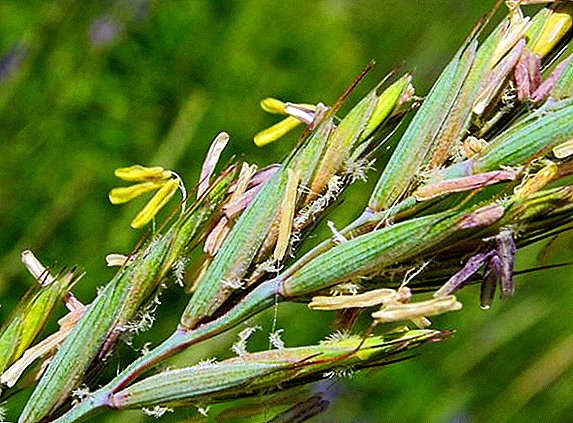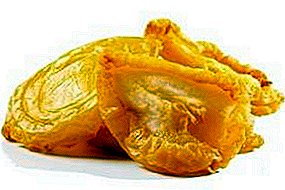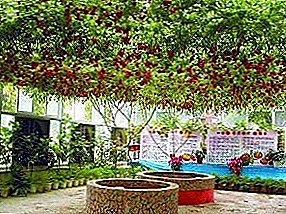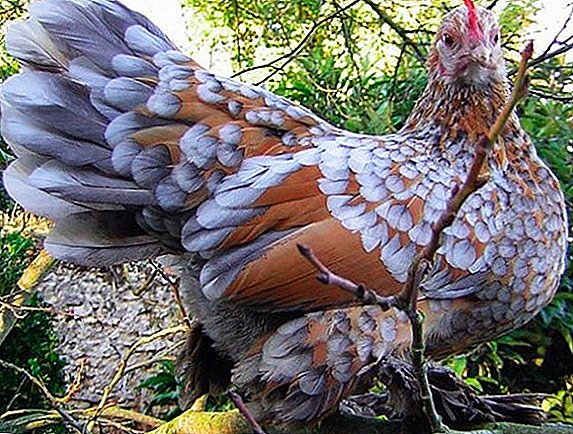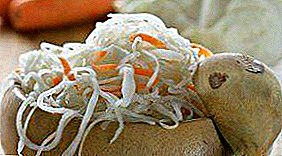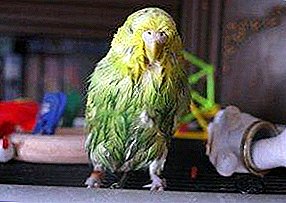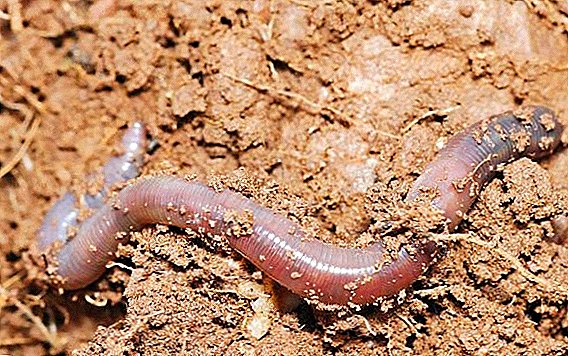 Role earthworms in nature and in human life is difficult to overestimate. The noble earthworm is an indispensable participant in the creation of fertile soil, and therefore the creation of food is the livelihood of mankind. Although we do not often think about it, but without earthworms, our existence could be complicated.
Role earthworms in nature and in human life is difficult to overestimate. The noble earthworm is an indispensable participant in the creation of fertile soil, and therefore the creation of food is the livelihood of mankind. Although we do not often think about it, but without earthworms, our existence could be complicated.
Earthworms: Description
 Earthworm or earthworm -it is a segmented tubular worm. It lives in moist soil and feeds on organic matter. The average life span is 4 to 8 years. Depending on the type of specific soil inhabitants, the earthworm can sometimes live for more than 10 years. The digestive system of the worm runs along the entire length of its body, and the movement of a set of muscles of the intestinal line contributes to the digestion of food.
Earthworm or earthworm -it is a segmented tubular worm. It lives in moist soil and feeds on organic matter. The average life span is 4 to 8 years. Depending on the type of specific soil inhabitants, the earthworm can sometimes live for more than 10 years. The digestive system of the worm runs along the entire length of its body, and the movement of a set of muscles of the intestinal line contributes to the digestion of food.
In addition, this small earthman has a central and peripheral nervous system, and is able to breathe through the skin. The connective tissues (bones or cartilage) are completely absent in the body of the earthworm. Its long body, filled with mucous fluid, functions as a hydrostatic skeleton. The annular and longitudinal muscles on the periphery of each segment allow the indicated invertebrate to move.
Did you know? The structure of the body of the earthworm allows you to confidently call it one of the strangest inhabitants of the soil, because he has no eyes, no ears, no even lungs. However, it has several hearts, and the mucous fluid covering the skin of the worm protects it from predators, as it has an unpleasant taste for them.
Types of worms
 Earthworms - This is a large group of species that belong to different families. Varieties of earthworm can be found on all continents of our planet. In total, there are more than 2,000 species. Of these, about 40 are widely distributed in Europe, and the most famous are: the usual earthworm (Lumbricus terrestries) and the dung-worm (Eisenia faetida).
Earthworms - This is a large group of species that belong to different families. Varieties of earthworm can be found on all continents of our planet. In total, there are more than 2,000 species. Of these, about 40 are widely distributed in Europe, and the most famous are: the usual earthworm (Lumbricus terrestries) and the dung-worm (Eisenia faetida).
Ordinary earthworm can reach 30 cm in length; has a brown or red body; lives in the fields, gardens and orchards. It is very intensively digging deep passages in the ground (up to 3 meters deep).
Muckworm slightly smaller than normal (4 to 14 cm in length). Its body has a rusty color with yellow stripes around the rings. The name of the dung-worm speaks for itself: it is found exclusively in compost soil. To survive, this invertebrate needs earth enriched with organic material. The ideal temperature range for a dung-worm is + 15 ... + 25 ° С.
Earthworms are also distinguished by biological characteristics, that is, by types of food and habitat in the soil.
Based on these signs, there are two main types:
- worms that inhabit the surface of the soil;
- worms living inside the ground.
Did you know? His name "earthworm" got back in XVI century. Most likely, people gave him this name because of his active life: in rainy weather, the worm comes to the surface, since otherwise risk drowning.
Features of the life cycle of earthworms
The life cycle of most types of earthworms can be divided into four stages:
- The first stage: hatching worms from the cocoon. The process of egg ripening takes from 2 weeks to 3 months, after which the embryos leave their cocoons. The warmer the climate, the faster the new individuals will hatch, and in very warm weather, the eggs fully mature within 14 days (for comparison, in cold conditions, this process lasts about 60 days).
- The second stage: withadult maturation. Already in the early stages of life (after 2-3 months), young worms begin to develop their own reproductive system, and within one year the new adult organism is fully formed.
- The third stage: reproduction. Earthworms are hermaphroditic, that is, each individual has both male and female reproductive organs. Despite this fact, worms must mate to reproduce offspring. Two worms stick together and form a shell, which gives them space to exchange sperm. Fertilization occurs in both bodies.
- Stage Four: Aboutlaying cocoon. After the fertilization process is over, the worms separate and form cocoons inside their bodies, after which they roll into the soil for further maturation. A standard cocoon contains from 1 to 5 embryos.
How are worms in the garden
 Cultivation and popularization of earthworms in the garden brings great benefits to the soil. If they are contained in the soil in sufficient quantities, they can play a crucial role in the successful cultivation of plants. These invertebrate meek creatures are gardener's best friends. Some gardeners even call them "the first agrotechnists of nature," because the richer the soil, the more earthworms you find in it. But what specific benefits do worms bring to the soil? Firstly, they will do all the hard work for you, as they are able to loosen the earth, improve its structure, preserve and increase fertility.
Cultivation and popularization of earthworms in the garden brings great benefits to the soil. If they are contained in the soil in sufficient quantities, they can play a crucial role in the successful cultivation of plants. These invertebrate meek creatures are gardener's best friends. Some gardeners even call them "the first agrotechnists of nature," because the richer the soil, the more earthworms you find in it. But what specific benefits do worms bring to the soil? Firstly, they will do all the hard work for you, as they are able to loosen the earth, improve its structure, preserve and increase fertility.
Moving through the garden, they create tunnels that, like plowing, allow air and water to reach the seeds and roots of plants. Thus, earthworms act like tiny invisible pahari. Moreover, they provide plants with nutrition and protect them from pests and diseases. Worms are the main producers of stable humus, as they feed on organic matter, such as rotten leaves, mowed grass and even dirt.
Digesting food, these spineless form organic excrement, rich in phosphorus, calcium, nitrogen and magnesium, which help to further enrich the soil and plant growth. Therefore, having found many worms in their garden and wondering if they are harmful to the garden, the answer will be negative.
Did you know? Few people know that Charles Darwin (the famous naturalist, who proposed the theory of natural selection, was interested in earthworms. The scientist observed and studied worms for 40 years and as a result published a book about them called “Formation of the vegetative layer of the earth by the activity of earthworms and observation of their way of life” (1881).
How to increase the number of worms in the garden
 Earthworms and soil fertility are closely interrelated. Gardeners who want to increase the amount of earthworms in the garden soil can do this by adding more organic matter to it. In particular, soil mulching will help to attract earthworms. A variety of materials are used as a surface coating for soil: humus, fallen leaves, mowed grass, manure, manure compost.
Earthworms and soil fertility are closely interrelated. Gardeners who want to increase the amount of earthworms in the garden soil can do this by adding more organic matter to it. In particular, soil mulching will help to attract earthworms. A variety of materials are used as a surface coating for soil: humus, fallen leaves, mowed grass, manure, manure compost.
Breeding worms in chervyatnik
Earthworms need only a few conditions in which they will live and multiply successfully: adequate moisture, darkness, and food. The best time to organize a chervyatnik is spring or early summer, as in this case the worms will have time to multiply and get stronger before the onset of winter. So, let's see how to breed worms in the garden.
How to make and prepare chervyatnik
 As a dwelling place for worms, you can use any capacity - a box, a large trough, an old bath. Suitable conditions for earthworms can be provided on open compost, which has its advantages. However, in this case it is necessary to take care of the additional protection of invertebrates. The plot of land allocated for the chervyatnik is usually protected with a metal grid, and covered with a special fine grid on top.
As a dwelling place for worms, you can use any capacity - a box, a large trough, an old bath. Suitable conditions for earthworms can be provided on open compost, which has its advantages. However, in this case it is necessary to take care of the additional protection of invertebrates. The plot of land allocated for the chervyatnik is usually protected with a metal grid, and covered with a special fine grid on top.
For convenience, the further care of chervyatniki, its size should not be too large. At the bottom of the future house for the worms, you need to lay out the compost (about 40 cm thick) and pour it well with warm water (preferably rainwater). Then you should cover the litter with straw and let it brew for 5-6 days. Now the dwelling is ready to move in.
Settling worms
Earthworms for colonization can be found in their own garden (individuals that are collected right after the rain best of all take root) or simply buy them. For a good chervyatnik that will constantly provide you with biohumus, you need from 500 to 1000 individuals per 1 m². We start the process of settlement. In the center of the dwelling it is necessary to make a hole and overturn a bucket of worms there. Then carefully distribute the worms and cover with straw or sacking on top. The first results can be assessed in a week. Periodically observe how the worms feel in the new environment. If they are moving and hiding from the daylight, then everything is in order.
Important! So that earthworms can easily adapt, feeding should begin only after 3-4 weeks after settling, and before that, do not forget to regularly water the chervyatnik with warm defended water.
How to care for worms in a chervy
 The answer to the question "How many earthworms live?" Directly depends on the correctness of their care and the conditions created. For the normal existence of the worms need moisture (the place of their housing periodically need to be watered) and relative coolness, so the home must be moved to the shade. Invertebrates also like to add some sand to the compost, and sprinkle crushed eggshells on top. In addition, they need to provide a sufficient amount of food, so do not forget to add fresh food to the chervyatnik once a fortnight. However, you should never overfeed the worms.
The answer to the question "How many earthworms live?" Directly depends on the correctness of their care and the conditions created. For the normal existence of the worms need moisture (the place of their housing periodically need to be watered) and relative coolness, so the home must be moved to the shade. Invertebrates also like to add some sand to the compost, and sprinkle crushed eggshells on top. In addition, they need to provide a sufficient amount of food, so do not forget to add fresh food to the chervyatnik once a fortnight. However, you should never overfeed the worms.
For those who are interested in what the earthworms eat, we note that they eat almost any organic material that is available in the garden plot. The only requirement is that food should be chopped, since worms have no teeth. Also try to maintain a constant feed composition.
Important! Before you add a new batch of feed to the chervyatnik, make sure that the worms have eaten the previous one, as it is necessary to avoid excessive accumulation of uneaten food. The remains of food in the compost, where the worms live, can significantly increase its acidity, thereby creating deadly conditions for your worms. In addition, excess food can attract pests such as ticks.
How to collect vermicompost worms
 The main purpose of breeding earthworms is the production of vermicompost. Biohumus or vermicompost - uhThis is an organic, environmentally friendly fertilizer obtained from the processing of household and industrial waste worms. In other words, through a natural digestive process, earthworms transform various wastes into natural fertilizers. For wild plants, vegetables, flowers and trees, manure processing by worms is a good chance to get high-quality fertilizer.
The main purpose of breeding earthworms is the production of vermicompost. Biohumus or vermicompost - uhThis is an organic, environmentally friendly fertilizer obtained from the processing of household and industrial waste worms. In other words, through a natural digestive process, earthworms transform various wastes into natural fertilizers. For wild plants, vegetables, flowers and trees, manure processing by worms is a good chance to get high-quality fertilizer.
Worms mainly live in the upper soil layer, while the biohumus they produce accumulates in the lower layer. To collect it, you need to carefully remove the top layer of worms and transfer it to a new prepared container. The bottom layer is sifted and laid out on the beds.
How to protect the chervyatnik for the winter
Cold weather can adversely affect the success of breeding earthworms in the country. Therefore, in winter there is a certain set of tasks when caring for chervyatnik.
The following list presents the main measures for the protection and processing of chervyatnik at low temperatures:
- Reduced feeding. During the period when the temperature around the chervyatnik falls below + 2 ... + 3 ° С, it is desirable to drastically reduce the amount of feed. At about the same time, the worms themselves stop feeding and hibernate.
- Move the chervyatnik to a warmer place. Frosts are very dangerous for the chervyatnik, as the worms may die from low temperatures. Therefore, the dwelling of the spineless must be moved to a warmer place. Try to maintain the temperature around the chervyatnik above + 4 ° С of heat. Also do not forget about the ventilation of the room. Worms need oxygen and fresh air, and from their lack quickly fall ill.
- Control the movement of worms. In cold conditions, the worms begin to move actively. If there is a large number of pets in your chervyatnik, this can create a huge mess. The worms will strive to massively abandon the chervyatnik in search of better conditions for life, but the trouble is that eventually you will find them dead on the floor. Therefore, be careful and watch the movement of their wards.
As you can see, the breeding of earthworms is not very troublesome, but grateful. These useful earthmen provide natural fertilizer - biohumus, which is often called the unique and most valuable fertilizer of the new generation, which once again proves the irreplaceable role of worms in the soil.


